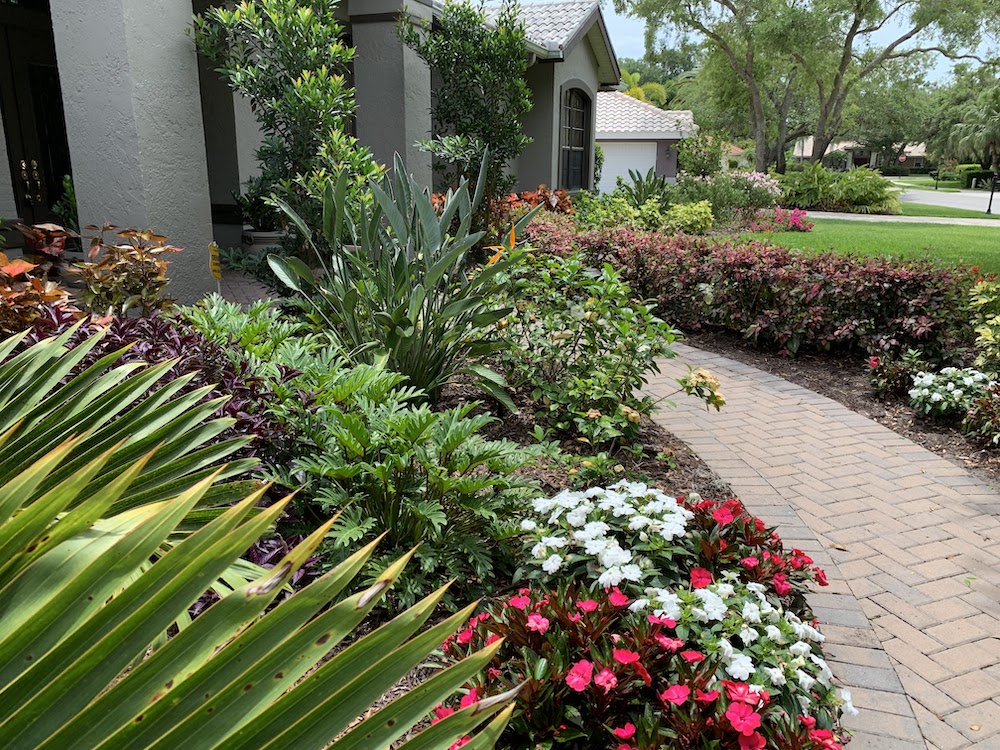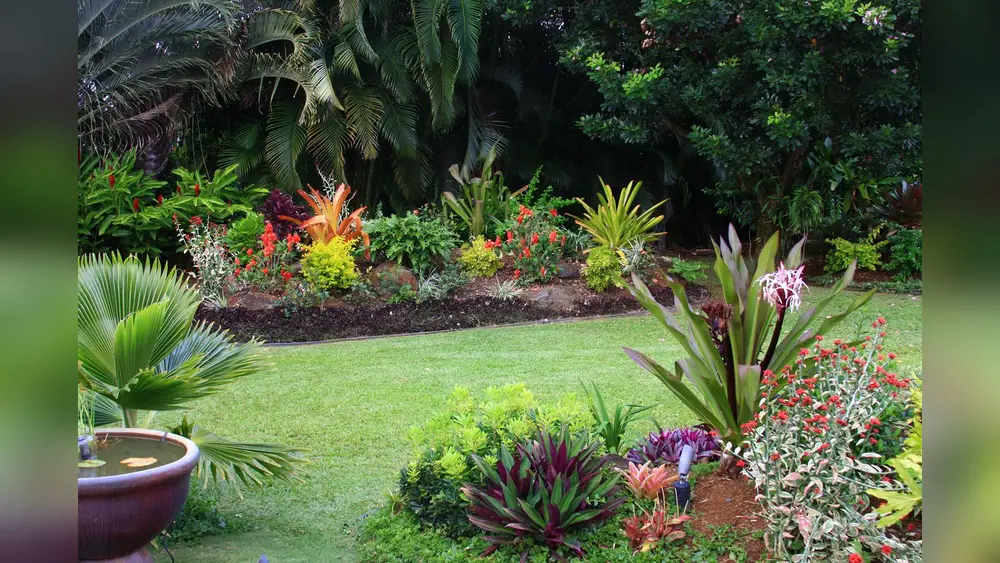Are you ready to transform your Florida garden this March? This is the perfect time to plant a variety of vibrant flowers and fresh vegetables that will thrive in the Sunshine State’s unique climate.
Whether you’re a seasoned gardener or just starting out, knowing which plants to choose can make all the difference in creating a flourishing garden. In this guide, you’ll discover the best plants for March in Florida that will brighten your space and boost your harvest.
Keep reading to find out exactly what to plant now to enjoy a beautiful, bountiful garden all season long!
Warm-season Vegetables
March is the perfect time to plant warm-season vegetables in Florida. These crops thrive in the rising temperatures and longer daylight hours. Starting warm-season vegetables now leads to a bountiful summer harvest. They enjoy full sun and well-drained soil, common in Florida gardens during this month.
Choose vegetables that handle heat well and resist pests. Planting at the right time avoids frost damage and supports strong growth. Many gardeners see great success with popular, easy-to-grow warm-season vegetables in March.
Tomatoes And Peppers
Tomatoes and peppers do well in Florida’s warm March weather. Plant young seedlings after the last frost date. These vegetables need at least six hours of sunlight daily. Use fertile soil with good drainage to help roots grow deep. Water regularly but avoid soggy soil to prevent disease. Choose varieties suited for Florida’s heat to get the best yield.
Cucumbers And Melons
Cucumbers and melons love the warm, sunny days of March. Sow seeds directly into the garden for best results. These plants need space to spread, so give them room to grow. Keep soil moist but not wet to encourage healthy fruit development. Both cucumbers and melons enjoy heat and will produce sweet, juicy fruits through summer.
Okra And Southern Peas
Okra and southern peas are classic warm-season crops in Florida. They tolerate heat and dry conditions well. Plant seeds directly into warm soil in March. These vegetables grow fast and yield plenty of pods. Okra flowers add beauty while southern peas enrich the soil with nitrogen. Both are excellent choices for a productive Florida garden.

Credit: gardenvive.com
Cool-season Vegetables
March in Florida offers perfect weather for growing cool-season vegetables. These plants thrive in mild temperatures and can handle the early spring climate well. Growing cool-season vegetables now gives you fresh, healthy produce before the hot summer arrives.
These vegetables grow quickly and are easy to care for. They add variety and nutrition to your garden and meals. Start planting leafy greens, root vegetables, and hearty greens for a productive garden in March.
Lettuce And Spinach
Lettuce and spinach grow well in Florida’s cool March weather. They prefer cooler soil and can be harvested early. Plant seeds directly in well-drained soil with plenty of sunlight. Keep the soil moist to encourage fast growth. These greens are perfect for salads and sandwiches.
Carrots And Radishes
Carrots and radishes develop best in loose, sandy soil. They enjoy the cooler temperatures of March. Sow seeds directly into the garden bed. Radishes grow quickly, often ready in just a few weeks. Carrots take longer but reward with sweet, crunchy roots. Both add color and crunch to meals.
Kale And Swiss Chard
Kale and Swiss chard tolerate cooler weather and light frosts. These leafy vegetables grow tall and produce many leaves over time. Plant seedlings or seeds in rich soil with good drainage. Water regularly to keep leaves tender. Both are rich in vitamins and perfect for cooking or salads.
Vibrant Annual Flowers
March in Florida brings warm days and bright sunshine. It is the perfect time to plant vibrant annual flowers. These flowers add color and charm to gardens, patios, and balconies. They grow quickly and bloom beautifully throughout the season. Choosing the right flowers ensures a lively and fresh garden.
Annuals thrive in Florida’s climate during March. They handle the heat well and brighten outdoor spaces. Gardeners enjoy their bold colors and easy care. Below are some top picks for vibrant annual flowers to plant this month.
Petunias And Marigolds
Petunias offer bright, trumpet-shaped blooms in many colors. They spread nicely and fill garden beds with color. Marigolds have sunny yellow and orange flowers that repel pests. Both plants love full sun and well-drained soil. They bloom from spring until fall, providing long-lasting beauty.
Daffodils And Tulips
Daffodils bring cheerful yellow flowers early in the season. They brighten borders and containers with their classic shapes. Tulips add elegant colors like red, pink, and white. These bulbs prefer cooler spots and start blooming in early spring. Planting them in March ensures vibrant spring displays.
Azaleas And Camellias
Azaleas bloom in stunning shades of pink, red, and white. They flourish in partial shade and acidic soil. Camellias produce large, rose-like flowers that bloom in cooler months. Both shrubs add texture and color to gardens. Their flowers last for weeks, making them great spring choices.

Credit: www.all-trustedlawncare.com
Native Plants For Florida Gardens
Native plants thrive in Florida’s unique climate and soil. They need less water and care than non-native species. These plants support local wildlife and help maintain the natural ecosystem. Planting native species creates a beautiful, sustainable garden that fits Florida’s environment perfectly.
Goldenrod And Swamp Sunflower
Goldenrod brightens gardens with its tall, yellow flower spikes. It blooms from late summer to fall, attracting bees and butterflies. Swamp sunflower grows well in wet areas. Its vibrant yellow flowers bloom in late summer. Both plants add color and support pollinators in Florida gardens.
Muhly Grass And Milkweed
Muhly grass shows off pink or purple fluffy blooms in fall. It grows well in dry or sandy soils. Milkweed is vital for monarch butterflies. It provides food for caterpillars and nectar for adult butterflies. These plants improve garden biodiversity and bring life to your outdoor space.
Benefits Of Native Plants
Native plants use less water and resist local pests naturally. They reduce the need for fertilizers and chemicals. These plants help keep the soil healthy and prevent erosion. They attract native birds, insects, and butterflies to your garden. Choosing native plants supports Florida’s environment and saves time and money.
Planting Tips For March
March is a great time to start planting in Florida gardens. The weather warms up, and many plants thrive in this season. Proper care and planning help plants grow strong and healthy. Here are some key tips for planting in March.
Soil Preparation
Start by clearing weeds and debris from the soil. Loosen the soil with a garden fork or tiller. Add compost or organic matter to enrich the soil. Mix it well to improve drainage and nutrients. Test the soil pH and adjust if needed, aiming for a slightly acidic to neutral range. Well-prepared soil helps roots grow deep and absorb water easily.
Watering Guidelines
New plants need regular watering to settle in. Water deeply but less often to encourage strong roots. Early morning watering reduces evaporation and prevents diseases. Avoid overwatering; soggy soil can harm roots. Check soil moisture by feeling it; water when the top inch feels dry. Adjust watering based on rainfall and temperature changes.
Frost Risk And Timing
Frost risk decreases in March but can still occur in some areas. Plant tender vegetables and flowers after the last frost date. Use local frost date calendars to time planting correctly. Cover young plants with cloth or plastic on cold nights if frost is expected. Waiting for safe planting times ensures plants survive and grow well.
Low-maintenance Garden Ideas
Creating a garden that thrives with little effort suits many Florida gardeners. Low-maintenance garden ideas save time and water. These gardens focus on plants and designs that need minimal care. They also support Florida’s natural environment. March is a great time to plan such gardens. The climate allows planting hardy species that flourish easily. Here are some smart ideas for a low-maintenance garden in Florida.
Rain Gardens
Rain gardens capture and absorb rainwater from roofs and driveways. They reduce runoff and help prevent flooding. Plants used in rain gardens tolerate occasional wet soil. Native choices include goldenrod, swamp sunflower, and muhly grass. These plants attract butterflies and bees, boosting local wildlife. Rain gardens need little extra watering once established. They improve soil quality and add beauty to any yard.
Drought-tolerant Plants
Drought-tolerant plants survive with little water. They are perfect for Florida’s dry spells. Examples include agave, lantana, and sedum. These plants have thick leaves to store water. They require less watering and fertilizer. Drought-tolerant gardens reduce water bills and maintenance time. They also stay green and colorful during hot months. Planting these species helps conserve Florida’s water resources.
Florida-friendly Landscaping
Florida-friendly landscaping uses native and well-adapted plants. This style reduces the need for fertilizers and pesticides. It focuses on conserving water and protecting wildlife habitats. Plants like coontie, firebush, and saw palmetto thrive in Florida’s climate. This landscaping style blends beauty with sustainability. It also supports pollinators and birds. Florida-friendly gardens need less work and stay healthy longer.
Herbs And Specialty Crops
March is a great month to start herbs and specialty crops in Florida gardens. These plants add flavor and variety to meals. They also offer unique gardening experiences for home growers.
Herbs grow well in Florida’s warm climate. Specialty crops like Jerusalem artichokes, strawberries, and peanuts thrive too. Planting these in March sets the stage for a bountiful harvest.
Parsley And Basil
Parsley grows quickly and prefers full sun to partial shade. It adds fresh taste to many dishes and is rich in vitamins. Basil loves warm weather and needs plenty of sunlight. Regular watering helps basil produce large, fragrant leaves. Both herbs can be grown in pots or garden beds.
Jerusalem Artichokes
Jerusalem artichokes are tubers that grow underground. They need loose, well-drained soil and full sun. Plant tubers about 4 inches deep in March. These crops are low-maintenance and can reach 6 feet tall. Harvest the tubers in late fall for a nutty-flavored vegetable.
Strawberries And Peanuts
Strawberries grow best in Florida’s mild climate. Choose disease-resistant varieties for better results. Plant strawberries in well-drained soil with full sun exposure. Peanuts are another specialty crop that fits well in March planting. They require sandy soil and warm temperatures. Both crops add diversity to your garden and kitchen.

Credit: tropicalgardenslandscape.com
Frequently Asked Questions
What Can I Plant In Florida In March?
Plant warm-season vegetables like tomatoes, peppers, cucumbers, beans, and okra in Florida during March. Also, sow herbs, lettuce, carrots, and radishes. Bright annual flowers such as petunias and marigolds thrive well this month. This timing ensures growth after frost risk passes.
What Plants Should I Plant In March?
Plant warm-season vegetables like tomatoes, peppers, cucumbers, beans, and okra. Sow cool-season crops such as carrots, lettuce, kale, peas, and radishes. Add bright annual flowers like petunias and marigolds for vibrant March gardens. Choose native plants for low-maintenance landscaping in Florida.
What Is The Best Low-maintenance Landscape In Florida?
The best low-maintenance landscape in Florida features native plants like goldenrod, swamp sunflower, muhly grass, and milkweed. Rain gardens help control water naturally and require minimal care. This approach suits Florida’s climate and reduces upkeep while enhancing curb appeal.
What Flowers Bloom In March In Florida?
In March, Florida blooms with anemones, camellias, daffodils, tulips, grape hyacinths, irises, azaleas, and scabiosas.
Conclusion
March offers a perfect time to plant many Florida-friendly species. Choose vegetables like tomatoes, peppers, and cucumbers for a fresh harvest. Bright annuals such as petunias and marigolds add color and life. Native plants thrive well with less care and conserve water.
Keep soil healthy and water regularly for best growth. Enjoy watching your garden flourish under Florida’s warm March sun. Start planting now for a vibrant and productive garden season.

